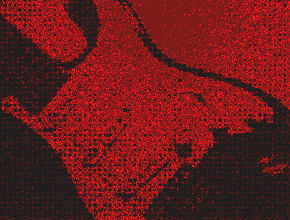Note: This post is part of a collection of analyses based on the compilation New Wave of British Heavy Metal ’79 Revisited, an album put together by Lars Ulrich and Geoff Barton that is not only a significant account of a particularly important period in the history of heavy metal by two people who helped shape that scene, but may also be a revealing window into the influences and musical raw materials that Ulrich drew from when he founded what became the most successful metal band in history, Metallica.
Sweet Savage’s “Eye of the Storm” is the second track of the New Wave of British Heavy Metal ’79 Revisited compilation. ((In the rest of this article, New Wave of British Heavy Metal is abbreviated NWOBHM.)) According to the extensive and fairly reliable fan database Encyclopedia Metallum, “Eye of the Storm” was first released by the band in 1981 on Sweet Savage’s first demo tape. ((This 1981 demo tape also is the first appearance of “Killing Time,” a song Metallica covered on their 1998 album Garage, Inc. Apparently the title “’79 Revisited” doesn’t refer to the year 1979 specifically.)) The version on the NWOBHM ’79 Revisited album doesn’t sound like a demo tape, and is from a live session Sweet Savage recorded for BBC Radio1 in 1981. ((This recording was released by the BBC the same year as part of a compilation of sessions from Radio1’s Friday Rock Show. http://www.discogs.com/Various-The-Friday-Rock-Show/release/1722530 )) Sweet Savage released a few singles in the ’80s, but they didn’t manage to put out a proper album until they had a reunion in 1996, too late to get the kind of fanbase or commercial success that landed bands like Iron Maiden and Judas Priest in the history books. ((Eduardio Rivadavia over at AMG music describes this compilation as including “relative unknowns such as Sweet Savage…”)) Continue reading
